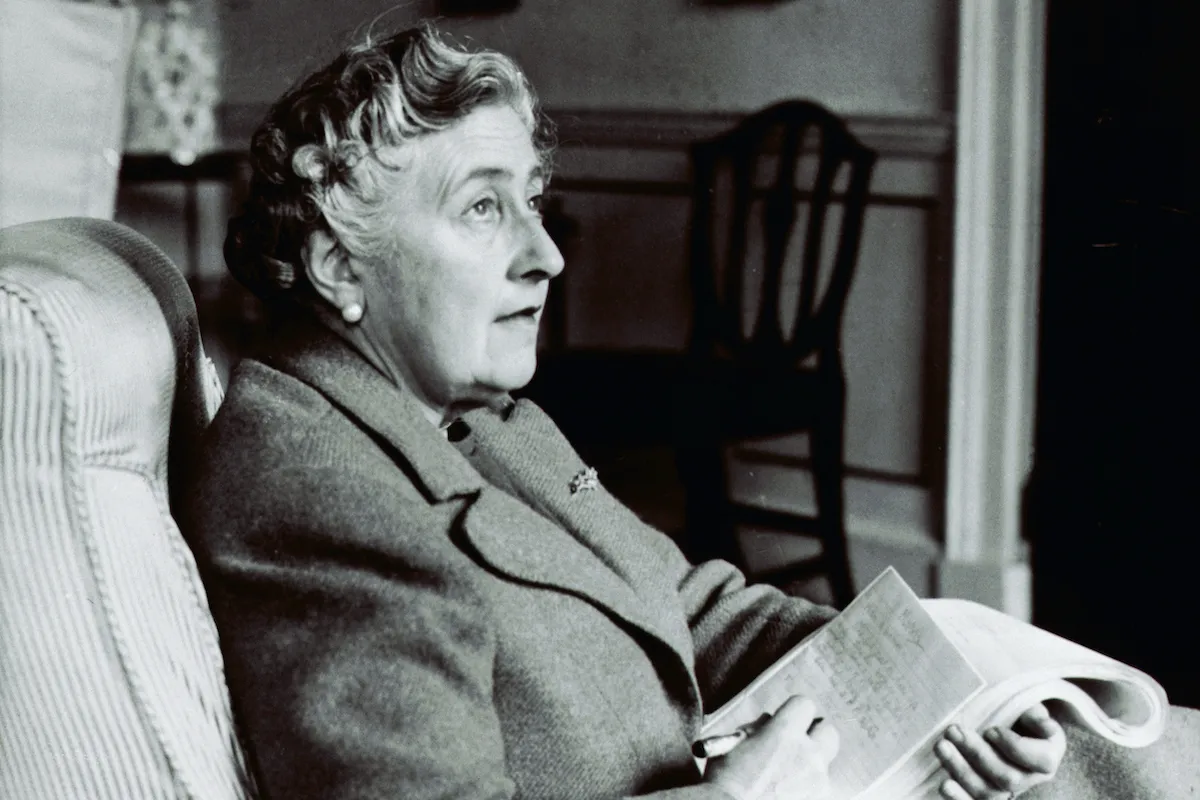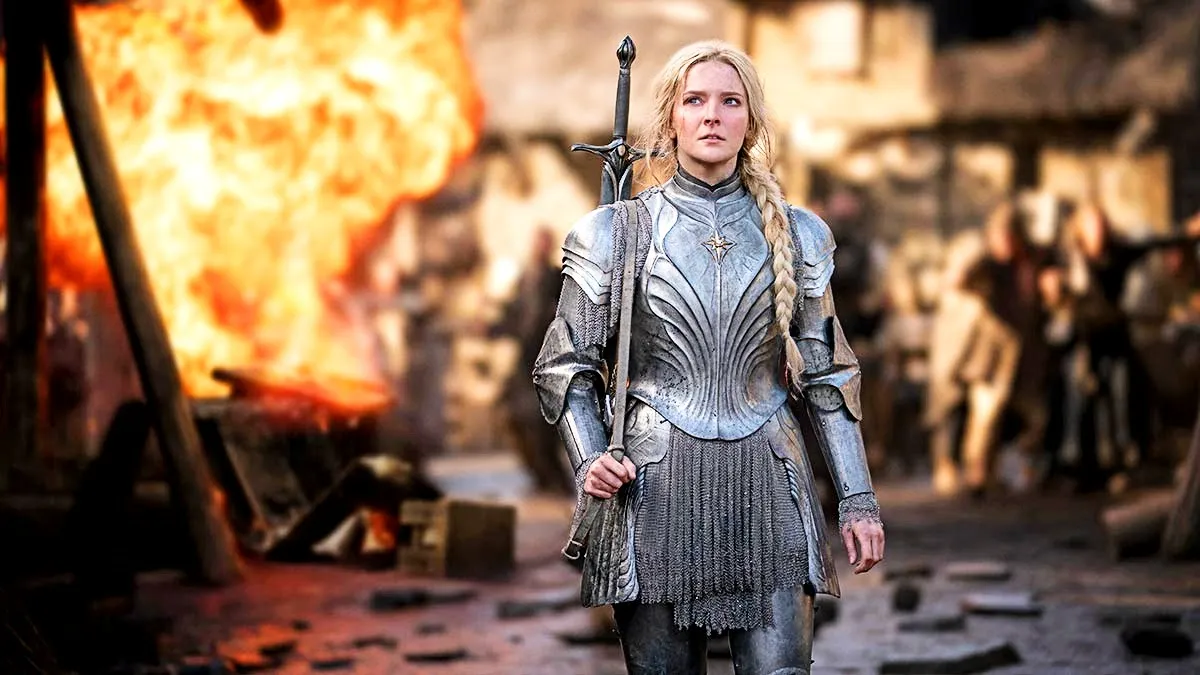Everyone will, at one point, have read (or watched) an Agatha Christie story. Christie is one of the best-selling authors of all time and the most translated author in history, and her name is synonymous with the murder mystery genre.
But who was she, really? Where did that ever-present imagination come from? How did she develop her craft? Avid writers and readers like myself have been trying to unravel the mystery of her success for decades. Now, one historian may have provided the answer.
Starting Sunday, December 3, PBS will air a three-part docuseries about Christie, titled Agatha Christie: Lucy Worsley on the Mystery Queen. Lucy Worsley is a British historian, author, curator, and television presenter whose previous documentary work includes deep dives into British architecture, the Royal Family’s legacy, and, coincidentally enough, Britain’s “morbid national obsession” with murder. Now, she’s using her skills as a researcher to delve into Christie’s life and imaginative mind in a bid to understand how the eminent author honed her craft and created so many incredibly effective storytelling devices—all of which are still used in murder mystery narratives to this day.
What makes Agatha Christie’s writing so effective?
The first episode opens with a haunting fictional recreation of Agatha’s childhood. Worsley’s rousing voice-over says, “Agatha Christie’s childhood is haunted by a sinister phantom—the gunman. An imaginary figure stalking her dreams and her home. Possessing and threatening the people she knows and loves. For the terrified young Agatha, evil is an ever-lurking presence, just waiting to be unveiled.”
This brief yet undeniably effective introduction sets the tone for the rest of the series. If Agatha was already dreaming about evil intruders when she was young, is anyone at all surprised that she would go on to write so many twistedly memorable murder mysteries? Christie’s vivid imagination is a running theme throughout the show, but a writer needs more than imagination to become as popular as she did. That’s where Worsley’s investigation comes in.
Christie’s personal life was full of heartache and mystery, but also love and contentment. Worsley proves to her audience that Christie’s imagination didn’t come out of nowhere—every single story she wrote was influenced by the incredible life she lived and her perception of the world. She lived through two World Wars, was caught between high society and financial struggle for most of her childhood, and witnessed extraordinary scientific advancements and constantly changing social attitudes. She poured all of that into her work, and it shows. Most of Christie’s murder mysteries are still relevant today, especially when it comes to societal issues like class and gender.
Most of all, however, Christie was, as proven by Worsley, an incredibly perceptive person. She understood human nature like few others and was capable of unraveling our complex range of emotions. But, once again, it’s not enough just to be able to read people. A writer needs to be able to transcribe those findings on the page as well, and Christie could do that like no other.
To better explore her characters’ feelings, desires, and motivations, Christie devised several tropes and recurring narrative devices to help her and her audience make sense of these intricate and twisting stories. It is these tricks and eventual tropes that made her work so accessible and widely beloved. As Worsley herself says in the first episode of the documentary, “[I think] there’s so much more to her writing than just the secret of whodunnit.” It’s not enough to have a surprising villain—their motive and the way the story unravels is just as important, if not even more so.
At one point, Worsley interviews Dr. Jamie Bernthal, a fellow Agatha Christie fan who has honed in on her very first Hercule Poirot story, The Mysterious Affair at Styles. Dr. Bernthal has access to one of Christie’s personal notebooks, which details Christie’s original ending for Styles. Interestingly enough, Christie’s original ending for the novel took place in a courtroom, with Poirot essentially committing perjury in the witness box. Bernthal explains that Christie’s publishers told her she needed to either “consult an expert” to make the ending more believable or change the setting entirely—and Christie chose the latter. That fateful change gave the world one of Christie’s most famous tropes: the “drawing room denouement.”
Essentially, the drawing room denouement reveals the killer in a domestic setting—as the documentary mentions, having a murderer be revealed in the drawing room is so much more dangerous and tantalizing than having a murderer be revealed in a closed, professional setting like a courtroom. It makes the entire story more personal, brings it closer to home both literally and figuratively, and forces the reader to ask: what if you had invited a murderer into your safe space? It’s an ending that sticks with you, and countless other murder mysteries employ the same trick today.
Famous contemporary examples like Midsomer Murders and Death in Paradise wouldn’t be the same without it, and the same goes for Christie’s infamous “closed circle of suspects” trope. Someone gets murdered on a remote island, so which one of the few people around you is the killer? That’s a terrifying thought, but one that allowed Christie to truly pick apart our defenses, insecurities, and weaknesses and wrap them all up into one delicious murder mystery package.
Despite using the same tropes again and again, Christie’s stories never lost their shine. This is because of one very important aspect. As Dr. Bernthal says, “She subverts what we think we want and gives us something so much more interesting.” Every time she uses these tropes, she reinvents them just enough to keep the reader guessing. When I spoke to Worsley as part of her press tour and asked her why Christie’s tricks have stayed so relevant despite using them again and again, she said, “It’s not necessarily recycling. It’s a double bluff. Nobody’s going to believe that I [Christie] could have pulled that one off again, and yet that’s exactly what I’m going to do.”
Worsley continued, “The reason that she stands out to my mind, head and shoulders above the other writers of the so-called Golden Age of crime … she just keeps going. That’s one of the things that’s really significant about her. Other people didn’t necessarily need to imitate her work in the ’40s, ’50s, ’60s, and ’70s because she was still there. That seems to be an extraordinary thing.”
And Worsley’s right, of course—throughout her career, Christie published over 75 detective novels, plays, and short stories, not to mention the non-detective fiction she wrote under her pseudonym, Mary Westmacott. Christie never wavered in her dedication to writing nor in her belief in her patented narrative structures and devices. She knew how to read people and use that knowledge to her advantage, and it is exactly that which has made her work so enduringly popular.
More about Christie’s life and her work as a writer is unveiled in Agatha Christie: Lucy Worsley on the Mystery Queen, starting on Sunday, December 3, on PBS in the U.S. All episodes are available to stream now on BBC iPlayer in the U.K.
(featured image: Bettmann/Getty Images)










Published: Dec 3, 2023 05:46 pm